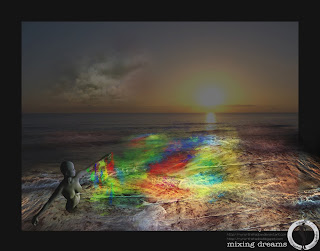
Our summer buying trips are always fun - it is the one time of the year when we can travel with our kids, the weather's beautiful, the food's great and we get to reunite with many of our friends in Europe. But
this summer was particularly memorable since we happened to be in Venice on the very weekend of the famous
Redentore...
Now I've been all over Italy on different trips, but never to Venice (Jean-Marc has traveled there on many occasions), so when the opportunity presented itself this summer through an invitation by one of our old friends and vintage Murano glass dealers, we thought, what the heck, let's just go...

 Leslie boarding flight Nice-Venice with Baboo Airlines (highly recommended!)
Leslie boarding flight Nice-Venice with Baboo Airlines (highly recommended!)
We hesitated at first - we only had 3 days and the thought of traipsing around Venice in the middle of July under sweltering heat was discouraging. Everyone had adamantly warned us in years past never to go to Venice in the summer - the crowds, the smells on the canals, the lines for the vaporetto.... I had visions of Venice sinking under the weight of a human quagmire of sweaty tourists...
(shudder). However, the details surrounding this
Redentore were just too irresistible, plus we had lots of shopping for
vintage Murano glass to do! So off we went.
 Le Grand Canal.
Le Grand Canal.We were not disappointed. Not only do I think Venice is the most beautiful city I've ever visited, but the
Redentore was by far the biggest party I have ever experienced in my life - all I can say is WOW! Yes, it was a bit hot - only for one day though, and yes there were some crowds, but not that bad really. I never encountered any unpleasant smells and the Venetians are just plain wonderful - beautiful, enthusiastic, generous, proud of their city (as they should be) and they bend over backwards to guide you through the maze that is Venice. There is something truly magical about this place, like something wonderful and unexpected is about to happen at any moment!
 Juliette, Jean-Marc and Leslie, arriving in Venice.
Juliette, Jean-Marc and Leslie, arriving in Venice. Juliette and Jean-Marc on the Grand Canal.
Juliette and Jean-Marc on the Grand Canal.So what exactly is this
Redentore ?
Il Redentore is a holiday in Venice that takes place each year on the third Saturday in July. It is an enduring celebration dating back to the 16th century that first started in thanks for the end of the plague in 1577. It is also one of the biggest festivals of the western world (why hadn't I heard of it?), and it is the
only day of the year when anyone residing outside of Venice can bring their boat into the San Marco basin. Hundreds of boats and yachts swarm the basin all day. They find a place to anchor, tie up to the boat next to them and prepare for the festivities (and the food!) and the famous show of fireworks (the "
foghi") that start at 11:00 pm and don't stop - I kid you not - until midnight!
It was absolutely amazing. First of all, let me just say, that the Venetians know how to throw a party! The food alone is a feast for the eyes (and tastebuds) and it keeps coming and coming for hours! (Remember this is on the water - prepared and transported by the party-goers ahead of time). We were treated to all sorts of Venetian delicacies such as sardines
in saor, seafood rice salad, pizza, porchetta sandwiches, pasta with pesto, octopus salad, Sicilian tomato sandwiches, not to mention a myriad of cheeses and desserts - all of course, washed down with a never-ending flow of Prosecco.




 Squisito!
Squisito!Then the party really started - tables and chairs pushed aside for a make shift dance floor, music blasting, boaters climbing into their neighbors' boats... three generations of men, women, and children living it up under a heavenly blanket of pink and blue skies, seagulls soaring, crowds cheering from the packed streets of the Piazza San Marco... It was crazy yet so civilized and cordial all evening. Then the fireworks started and everyone kicked back into a comfortable position to watch the magic of it all. Spectacular!


I regret I didn't film this once-in-a-lifetime spectacle, I was too enthralled to run down to the cabin and fetch my video camera. However, there are some pretty good videos of it on
YouTube.
The fireworks ended at midnight but it was a long time before we could actually clear out of there with all the boats maneuvering at the same time. The ride home was an adventure in itself because there are few lights to guide you and many shallow areas you have to avoid. We got home around 3:30 am and fell into bed with smiles across our faces. An unforgettable evening - Viva Italia!!
The next day we got down to business and went shopping! We'd already scouted out all three warehouses the day we arrived, so now we needed to make some decisions...
 Jean-Marc thinks hard amid a multitude of choices...
Jean-Marc thinks hard amid a multitude of choices...Suffice it t say, we picked out
lots of beautiful
vintage Murano glass pieces that will be arriving in the next shipment in October. Take a peek at what's coming...





We'll be certain to keep you posted the minute they arrive! In the meantime, you can still check out the newest pieces to the
gallery floor. Ciao, ciao!!
























































